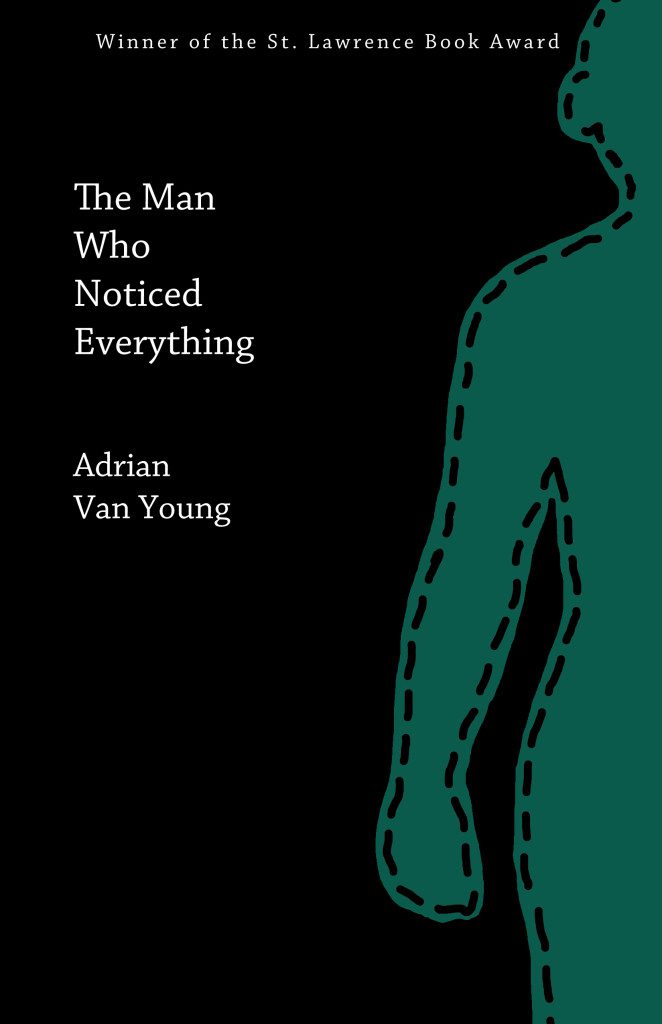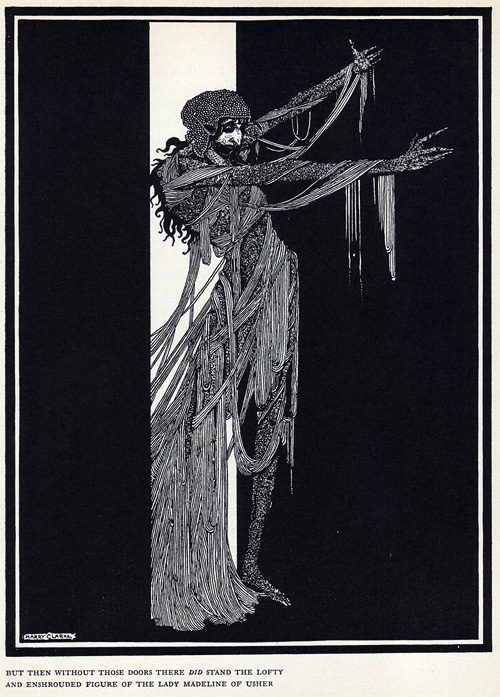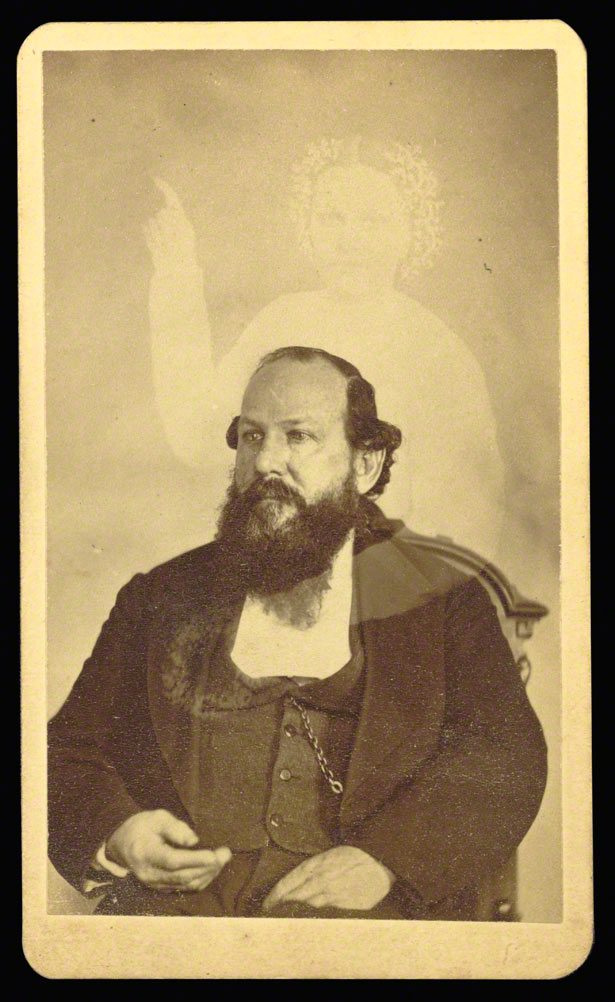There is something about the stories of Adrian Van Young that feels of another age. You might open the pages of his debut collection, The Man Who Noticed Everything, without looking at the cover, and think you had stumbled upon early stories of Cormac McCarthy, previously uncollected works of Flannery O’Connor, or even lost tales of Edgar Allan Poe. And yet, a few pages in, you would quickly realize that Van Young is not merely wading into these traditions—the Southern Gothic, the Romantic Gothic, the uncanny, horror—but swirling them around into new, unexpected shapes.
I met Van Young at the MFA program at Columbia University, and suffice to say his dark, existential stories stood out. Since that time, his fiction and writings on horror films and spiritualism have appeared in The Believer, Lumina, and Gigantic. This interview was conducted over e-mail over the course of several cold and dreary days.
***
The Rumpus: Can you explain the process you went through to publish your collection?
Adrian Van Young: Well, the process seemed very roundabout to me, the author, though in truth it was probably very straightforward. Much of what currently makes up the collection was part of my MFA thesis at Columbia, a collection of short stories—and an erstwhile novella—of the same name, and I had been in the process of simultaneously revising and “pitching” said collection to a number of literary agents when I entered the contest at Black Lawrence (the St. Lawrence Book Award) that landed me a contract there. Honestly, though, I had very little luck with getting literary agents interested in the project. So I revised, writing many of the stories from the ground-up several times, until I had them in more or less a working order, and began to concentrate, then, on unifying them as a collection. Aesthetically, thematically. Don’t get me wrong, though—I was thrilled to get picked up by Black Lawrence Press. They are a committed, eclectic, and all-around first-rate press, and have been great in terms of giving me creative control over my work, and letting me market it how I want to market it, and in my own time.
Rumpus: If you could have one story from The Man Who Noticed Everything turned into a film, which would it be, who would you want to direct, and who would star?
 Van Young: Strangely, I feel I have been waiting my whole life for someone to ask me that question! Thank you! I would have to say, without a doubt, the first story, “Hard Water,” which deals with the otherworldly tribulation of a gay tobacco farmer in Depression-era rural Georgia. I think I would cast either Steve Martin or Kevin Kline as the farmer (I’m talking Spanish Prisoner Steve Martin here)—in part, because they both embody the crossover between utter toughness and utter vulnerability that I was going for in that character (Colby Marshall Beech); in part, because I always envisioned the character looking like that, physically, and also because both actors can send up a vibration of menace where needed. I’d cast Michael Shannon as the drifter—he has this serrated edge to him, but also this sort of ravaged wisdom. In terms of a director, I think Nicolas Refn Winding would do a great job. Apart from the highly stylized, and somewhat hyper-real tone of his movies, I loved the morally dubious way he dealt with big-screen violence in his last film, Drive, and I think he does dangerous, intimate, almost sexual tension between characters really beautifully, as well.
Van Young: Strangely, I feel I have been waiting my whole life for someone to ask me that question! Thank you! I would have to say, without a doubt, the first story, “Hard Water,” which deals with the otherworldly tribulation of a gay tobacco farmer in Depression-era rural Georgia. I think I would cast either Steve Martin or Kevin Kline as the farmer (I’m talking Spanish Prisoner Steve Martin here)—in part, because they both embody the crossover between utter toughness and utter vulnerability that I was going for in that character (Colby Marshall Beech); in part, because I always envisioned the character looking like that, physically, and also because both actors can send up a vibration of menace where needed. I’d cast Michael Shannon as the drifter—he has this serrated edge to him, but also this sort of ravaged wisdom. In terms of a director, I think Nicolas Refn Winding would do a great job. Apart from the highly stylized, and somewhat hyper-real tone of his movies, I loved the morally dubious way he dealt with big-screen violence in his last film, Drive, and I think he does dangerous, intimate, almost sexual tension between characters really beautifully, as well.
Rumpus: Speaking of movies, I know you are a great fan of horror films—you have written about them for The Believer and elsewhere. Do horror films, or for that matter, other film genres, influence your writing? If so, which and what?
Van Young: Since I might be physiologically addicted to them, I’m not sure it’s possible that horror films haven’t influenced my writing in some way. I watch horror films—and films in general—of all different kinds: artsy and straight-to-video, blood-soaked and bloodless, supernatural and quotidian, on and on. Certainly, there’s an element of camp in a lot of horror movies that I find aesthetically stimulating and interesting to play with as a writer. Guillermo Del Toro—who directs fine, artful movies like Pan’s Labyrinth and The Devil’s Backbone alongside ones that are less so, like Mimic and Hellboy—said something to this end in his recent New Yorker profile, which encompasses, nicely, how I view the same dichotomy between high and low in my own work. “There is a part of me that will always be pulp,” he said. Which sort of assumes, you know, that there’s another part of him that will never be. I feel the same way, as both a writer and a horror fan.
Overall, though, I think that film at large has this intensely versatile index of visual cues and techniques that can’t be overestimated as an asset to writers of fiction. The two mediums have a tremendous amount in common, which you see not only in the contemporary work of someone like Jonathan Lethem, but also in books that were written pre-cinema, like Mary Shelley’s Frankenstein, for instance. For my money, that scene early in the novel where Victor catches sight of the monster illuminated, briefly, by the lightning encircling the Alps, is one of the most cinematic pre-cinematic scenes in literary history. If it’s even possible to say something like that…
Rumpus: One criticism I hear about young American writers, especially those with MFA degrees, is that they have no sense of literary history and they are taught to find their own singular “voice,” disembodied from the traditions of literature. Elif Batuman made that a central argument in her anti-MFA screed, for example. However, you are very conscious of working in different literary traditions. What traditions are those and how do they inform your work?
 Van Young: That’s an interesting perceived shortcoming of MFA programs these days. Of course, I’m flattered to be an exception, and agree with you that, yes, I am conscious of working in, around, and through these traditions. The Gothic and Grotesque traditions have, of course, always been huge for me. And I don’t limit those to moaning mansions and hags of doom—although there is always a distinct element of camp in my writing—but moreover a number of other sub-traditions that can fall under that banner. The Southern Gothic tradition has always been a big one (Faulkner, O’Connor, McCullers, Hannah, Gay, et. al.) for its hangman’s humor and scathing social and political commentary, as well as some of the more paranoid, interrogatory, first-person narrator stories and novels of Poe, and someone like Thomas Bernhard, say, and recently Brian Evenson and Roberto Bolaño. Yet I’m also very interested in the fairy-tale tradition, and the tradition of sweeping, historical fiction, too.
Van Young: That’s an interesting perceived shortcoming of MFA programs these days. Of course, I’m flattered to be an exception, and agree with you that, yes, I am conscious of working in, around, and through these traditions. The Gothic and Grotesque traditions have, of course, always been huge for me. And I don’t limit those to moaning mansions and hags of doom—although there is always a distinct element of camp in my writing—but moreover a number of other sub-traditions that can fall under that banner. The Southern Gothic tradition has always been a big one (Faulkner, O’Connor, McCullers, Hannah, Gay, et. al.) for its hangman’s humor and scathing social and political commentary, as well as some of the more paranoid, interrogatory, first-person narrator stories and novels of Poe, and someone like Thomas Bernhard, say, and recently Brian Evenson and Roberto Bolaño. Yet I’m also very interested in the fairy-tale tradition, and the tradition of sweeping, historical fiction, too.
Mainly, though, I’m into complicating and/or disquieting traditions and genres that readers have come to feel overly comfortable with, in my opinion. Say, the coming-of-age tale, the noir tale, the fairy tale. By which I mean, I want to situate readers comfortably within these traditions, and then take them, gradually, to a place they didn’t expect or aren’t altogether at ease with in terms of character or plot arc, moral valence, language, the reality that governs the story, among other concerns.
Rumpus: One thing that I see you taking from the Gothic tradition is your use of the supernatural, which seems to be a consistent foreboding presence in these stories. Not all of your stories have clear supernatural elements, but almost all of them seem to imply the possibility of the supernatural breaking through. The dread is there. Is that an effect you were aiming for in this collection?
Van Young: Absolutely. The supernatural has always been a pet obsession of mine—not only in terms of how it figures into high Gothic Horror—say, The Castle of Otranto by Horace Walpole, or even Macbeth—but more recently into uncanny fiction of all stripes, some of it very contemporary and experimental. Put plainly, I love the idea of lurking dread—the gradual or even forever-unrealized birthing of the unknown into the orbits of real, compromised lives. Indeed I’ve often found that when the dread remains enigmatic and unnamable—as in the stories of Evenson and Bolaño, Dan Chaon—or ambiguously realized—as in Shirley Jackson or Jane Bowles or Victor LaValle—it’s that much more effective, at least to me. Dread in the purest, most primal sense of the word. Because if you can’t quite put a finger on what it is that you’re dreading, there’s only that feeling. A lot of it is descriptive atmospherics—the vibration you send up in your portrayal of the fictional world. You see this a lot in Cormac McCarthy and Ben Percy’s writing. Angela Carter, too. And this, I think, can be a wonderful source of naturally-occurring tension in a story that runs congruent to whatever dramatic tension is happening among the characters. A sort of elemental tension, if you will. Because if you’re constantly held in a state of suspense as to whether the fog tendrils are going to grow arms and take someone down to the underworld, or gibbons come riding down out of the sky, then it’s going to foreground that other, human tension of whether Character A is going to rise to the task and save Character B, or whether Character C is going to change his ways by the end. It’s parallel tension in parallel worlds.
Rumpus: I’m completely with you on the tension that ambiguity creates. You seem very much in line with Ann Radcliffe, who talked about the distinction between “terror” and “horror.” For her, the ambiguous suspense of terror “expands the soul and awakens the faculties to a high degree of life,” while the overt blood and guts of horror merely deadens you. It also strikes me, as we were talking about MFAs before, that this type of thinking is perhaps an inversion of the traditional MFA advice for domestic realism fiction. The power comes from the lack of epiphany, and instead of the gun in the first page needing to go off in the third, the gun just hovers there silently in front of the character’s sweating face, to unknown ends.
Van Young: Man, I’d sure like to see more “overt blood and guts” in domestic realist fiction! In all seriousness, though, that distinction, once you realize it, or that technique, once you avail yourself of it, can be very powerful. And I agree that good “terror,” when it’s done right, can really take you out of yourself, as Radcliffe says, in this almost spiritual way. I suppose this comes closest to what the Romantics would’ve called “the Sublime,” i.e. coming closer to the ineffable through some kind of ultimate humbling experience, most often having to do with art or nature. Epiphany, in a Lorrie Moore story, can do that. But lack of epiphany, in one of Thomas Bernhard’s recursive, self-devouring narratives, can do that just as well. And sometimes it’s that lack of epiphany that’s more emotionally affecting, even, because sometimes—most of the time, actually—people don’t change. No matter what, though, I like to be overpowered by art. Indeed that seems to me a major precondition for experiencing it, and for returning to it time and again.
Rumpus: Have you ever had any experiences that felt potentially supernatural?
 Van Young: Funny you should ask that. Because, for someone fundamentally obsessed with the supernatural, I tend to have a pretty concrete view of the world. Researching the novel I’m working on now, I did sit for a medium once and had what you might call an uncanny experience, which I wrote about in an essay on modern Spiritualism for The Believer. My wife Darcy is a Unitarian Universalist minister, so while pretty reason-based in many ways, she helps to take me out of my concrete boots, now and then. As a writer, though, I have supernatural impressions of the world around me all the time. Which is to say that something essentially mundane will strike me, suddenly, as betokening the supernatural. People I see on the street day-to-day, bizarre-looking flora and fauna, inanimate objects and structures. For example, there’s that weird Broken Angel building in Brooklyn’s Clinton Hill (which makes a modified appearance in the story “King Dodd”)—or the viscous field-bulge from “Hard Water,” which is based on a phenomenon I actually witnessed outside of a hardcore show in San Diego when I was in high school. “The Sub-Leaser” was inspired by a nasty, actual sub-leaser who I myself hosted in my apartment up near Columbia, and who left the place trashed, inspiring a very real dread that was half-atmospheric, half-financial.
Van Young: Funny you should ask that. Because, for someone fundamentally obsessed with the supernatural, I tend to have a pretty concrete view of the world. Researching the novel I’m working on now, I did sit for a medium once and had what you might call an uncanny experience, which I wrote about in an essay on modern Spiritualism for The Believer. My wife Darcy is a Unitarian Universalist minister, so while pretty reason-based in many ways, she helps to take me out of my concrete boots, now and then. As a writer, though, I have supernatural impressions of the world around me all the time. Which is to say that something essentially mundane will strike me, suddenly, as betokening the supernatural. People I see on the street day-to-day, bizarre-looking flora and fauna, inanimate objects and structures. For example, there’s that weird Broken Angel building in Brooklyn’s Clinton Hill (which makes a modified appearance in the story “King Dodd”)—or the viscous field-bulge from “Hard Water,” which is based on a phenomenon I actually witnessed outside of a hardcore show in San Diego when I was in high school. “The Sub-Leaser” was inspired by a nasty, actual sub-leaser who I myself hosted in my apartment up near Columbia, and who left the place trashed, inspiring a very real dread that was half-atmospheric, half-financial.
In general, though, I’ve always thought that nothing is weirder than what’s already on this earth. I mean, look at those fish with their eyes up on stalks.
Rumpus: In the opening story, “Hard Water,” a gigantic bulge forms in the narrator’s backyard after he buries a body there. Eventually he rips open the bulge and digs through layers and layers searching for something, some meaning, yet finding nothing. This seems to set the tone for the collection where the supernatural—either realized or unrealized—feeds into the existential despair of the characters. Is this one way you are complicating genre traditions?
Van Young: Yes, I would say so. And yet, at the same time, it’s difficult to answer that question without giving away some major plot points. Suffice to say, I think it’s interesting that you, as a reader, made a causal connection between the “bulge [forming]” and a body being “[buried in the narrator’s] backyard.” Because for the narrator and the reader, perhaps, there is one—a casual connection—but for me as the writer, the question of whether or not a murder has been committed and concealed is almost phenomenologically ancillary to what the narrator does at the end, and what all of us do every day for that matter. Digging down into the dirt of ourselves—how we are, how we act—in the world that contains us. I had meant to locate the terror of that story, as you suggest, not in the crimes that the narrator may or may not have played some part in, or in the freakishness of the bulge itself, but rather in the labyrinthine fruitlessness of searching for causality and not finding any.
That is a sort of tweak on the Gothic tradition, I suppose. But then again the characters of Poe and Maupassant and Bierce do the same kinds of things in stories from one hundred years ago, and Kafka does it after them. Lydia Davis does it now. I suppose in that story, it’s only my tweak, then, on the literary heritage of burrowing inward. On another level, however, “Hard Water” is a Southern Gothic tale about isolation, paranoia, desire, and repression—it has all the trappings. So as you suspect, there’s a short and a long answer as to how it’s functioning in terms of genre.
Rumpus: I heard you had an…interesting reaction to your book launch in Boston. Can you explain?
Van Young: Haha. Yes. That’s a good word for it. Among those in attendance were four eleventh-grade boys from BC High School (that’s right, boys, I’m calling you out!) who’d been sent to the reading by their English teacher to fulfill some kind of attend-a-cultural-event requirement. And the passage I read from “Hard Water,” the first story—which this interview is beginning to feel like a transcription of—has some graphic allusions to gay sex in it. Not to mention, the narrator’s somewhat of a chicken-hawk, and over the course of the story has been maundering after one “boy,” in particular, who’s recently flown the coop. Suffice to say, these eleventh-grade boys—oh man!—were utterly scandalized and humiliated by the whole thing, and even went so far as to post their outraged and disgusted reactions to my “trashy,” “homoerotic” prose on an English class blog (feel free to Google for them, if you’re interested).
At first, I have to say, I was pissed, because this was, like, my first review! But then as I read their posts more carefully, I began to realize that they hadn’t actually understood, on a narrative level, what they’d heard, and that they were so consumed by the anal sex factor, not to mention what they kept calling the “hipsteresque” atmosphere of the launch itself, that a real consideration of the work and its intent hadn’t come into play. I mean, whatever, they were high school boys. Though I did find it a little disquieting that a frank depiction of sex between two dudes was so colossally anathema to them. My first thought was: hey now, come on, we’re in Boston! And then my second thought was: oh yeah, right, we’re in Boston. Which if you’ve ever spent time in Boston makes more than a little bit of sense.
Rumpus: What are you working on now?
 Van Young: A multiple-perspective historical novel about the father of spirit photography, William Mumler, one of the great hoodwinkers—or was he?—of the 19th Century. It’s set in Boston from the late 1850s through the mid-1880s, and traffics heavily in the American Spiritualist movement, which is just a crazy, unprecedented thing in American history—séances, wackadoo scientific theories, intense theatricality and mass delusion, free love… But it was a very sad time for America. There was slavery—the Civil War. People needed Spiritualism! The accounts that I read were full of anguish and that anguish still felt raw to me.
Van Young: A multiple-perspective historical novel about the father of spirit photography, William Mumler, one of the great hoodwinkers—or was he?—of the 19th Century. It’s set in Boston from the late 1850s through the mid-1880s, and traffics heavily in the American Spiritualist movement, which is just a crazy, unprecedented thing in American history—séances, wackadoo scientific theories, intense theatricality and mass delusion, free love… But it was a very sad time for America. There was slavery—the Civil War. People needed Spiritualism! The accounts that I read were full of anguish and that anguish still felt raw to me.
Anyway, the novel is narrated unreliably by all four of its first-person narrators, along with a sort of Greek chorus of spirits chiming in now and then, and follows Mumler and his outfit through a number of incidents real and imagined. There’s murder, ghosts, perversion, madness, religion—all that good stuff. It’s written in variously intense shades of 19th Century vernacular, too, which has been an unparalleled joy to experiment with. Trying to find new resonances in these broad, archaic modes of speaking.
Along with that, I’m in the beginning stages of formulating another, more domestic novel about American black metal, that’s loosely based on the epidemic of violence that surrounded the Norwegian band Mayhem in the early ’90s. I’m sure a lot of fun “research” will go into that. Bring on the blast beats! Also, I can’t believe I just used “domestic novel” and “black metal” in the same sentence. But then again, I can.





One response
Am I the only one who thinks that cover looks like the cover of The Man Inside Me by Dr. Tobias Funke? http://24.media.tumblr.com/tumblr_lhfcewfXxC1qh7t18o1_500.jpg
Click here to subscribe today and leave your comment.